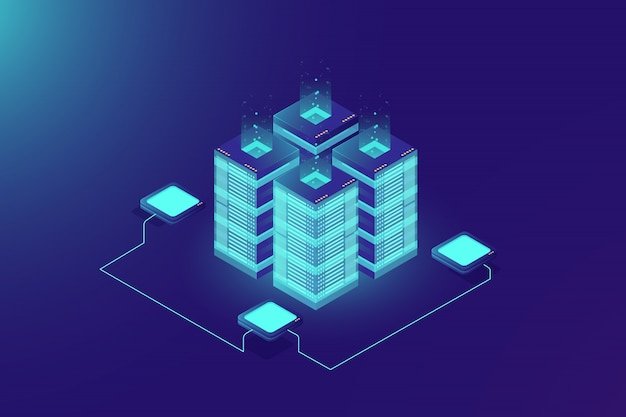Disruptive technologies, a direct selling breakthrough!

At work, you are a team of ten. As the business expands, the management decides to bring in new team members for smooth operations. But when new talents, who are from diverse backgrounds join your organization, there are sure going to be some disruptions. These changes ought to happen when people with newer ideas and understanding come together. In the long run, these disruptions are going to yield better results that resonate with the growth and success of the organization.
Remember how computers were perceived first as an innovation? It was not just a disruption, but a revolution itself. In the same way, automation, integration, etc. could be considered disruptive technology that transforms the way a business has been operating previously.
What is disruptive technology?
Disruptive technology is an innovation that substantially transfigures the way in which customers, businesses, or industries operate. Disruptive technology can supersede an existing system, products, processes, and habits with attributes or features that are much superior to the preceding structure.
In the direct selling point of view, disruptive technologies and emerging MLM tech trends have fundamentally reshaped businesses with advanced ecosystem and comprehensive solutions creating a major shift in facilitating tasks, speeding up sales, streamlining marketing, distribution and customer interaction. Ecommerce was one major disruptive technology that created waves in the industry transforming all of its operations right from the roots.
Usually, there is a sense of fear often detected in established enterprises to implement disruptive technology because there is a worry regarding the change that could shake the peaceful co-existence of the business. Whereas, with startup companies, trial and error or implementing an innovation could be less tedious as it might not necessarily create a huge imbalance in its ecosystem.
Sustaining technology
As we spoke about disruptive technology, you could be thinking why can’t there be an upgrade with the current technology rather than bringing in transforming technology? Oh yes, there is, and it is called sustaining technology.
So, what is sustaining technology? It is brands creating products that have better performance than the existing products to cater to its loyal customers. While profit is the motivating factor in sustaining technology, enhancing or upgrading the existing range of products could also improve brand integrity.
For example, in the computing industry, laptop computers came as a sustaining innovation to desktop computers. While the configurations may be the same, portability was the key highlight of laptop computers. It was a leveled-up or an upgraded version that had huge acceptance among computer users which offered them advanced flexibility.
Difference between sustaining and disruptive technology
While sustaining innovation aims at reviving products into high performing, better quality and higher result generating ones, disruptive technology aims at creating good enough products to cater to low-end and new segments in the market.
Similarly, these technologies vary in terms of target audiences as well. Sustaining innovation has its customer base strong and hence, product pricing is not a thing to worry about. The product has to be premium in terms of quality, look, and feel giving customers an elite experience.
Whereas, with disruptive technology, price tag does matter and hence, customers aim at grabbing a product that caters to their immediate requirements and not something that is feature-rich, premium, expensive or over satisfying.
Sustaining innovation is a high-profit business model whereas, disruptive innovation is a low-cost, low-profit business model that leads to greater profit. For direct selling businesses, the disruptive model could be a strong incentive to compete for a portion of the market segment.
Disruptive technologies that have altered the direct selling scenario
Disruptive innovation is often overlooked due to the fact it is not well understood. However, the direct selling industry over the years has realized the potential of disruptive technology and has made use of the same to enhance products and services in terms of quality, availability and affordability.
As we mentioned before, ecommerce was one such massive disruption that changed the overall functioning and operation of the direct selling sector. It overturned the conventional selling model in the direct selling sector and opened enormous opportunities for businesses, to rediscover their capabilities and to reach any nook and corner of the world.
Blockchain

Blockchain created a significant disruption in the direct selling sector that altered the way businesses are conducted. Blockchain reinforced the sector with its most advanced security features and transparency, which is synonymous with direct selling businesses. Its distributed database helps with secure and tamper-proof transactions, streamlining the business as a whole.
Cloud services

Direct selling businesses being a global affair, spread across many countries and regions, managed by numerous people all at the same time, cloud services help save any number of files of any large quantities to be saved on to the internet without any external storage equipment. This has helped the industry make use of company-specific, core tools and features from anywhere in the world by just connecting through their devices.
Improved connectivity with 5G technology
Our world is fast moving at each other’s fingertips. From buying and selling online to managing multiple businesses, tasks and duties from multiple locations, a direct selling business requires incredible speed to connect, communicate and for commerce. At an age where digital marketing, social commerce, social selling, live streaming, etc. are ruling the direct selling domain, fifth-generation mobile connectivity or 5G has unveiled endless opportunities with mobile networking for direct sellers to grow and evolve. As much as 5G helps with global connectivity, it helps with high-quality video streaming, faster scrolling, easier shopping, and safer checkouts.
Big data
We cannot begin to define how much data has disrupted the direct selling arena. From identifying customer preferences to curating products and services for their specific needs and interests, data has influenced and impacted the sector at large. With big data, huge amounts of data can be collected, managed, analyzed, and put to use to make profitable and efficient business decisions. With data, direct selling businesses have been able to reduce costs, save time, and improve the quality of products and services.
Hyper personalization
This innovation has levelled up the direct selling business to a whole new level creating a unique and exclusive experience for customers with specific products or services. With AI (Artificial Intelligence) and real-time data hyper-personalizing strategies to cater to varying customer demands and interests has helped elevate user experience in the direct selling by manifolds. According to the Gartner survey, by 2025, about 30% of outbound messages from larger organizations will be synthetically generated with the help of AI.
Smart assistants and Chatbots
Chatbots and smart assistants disrupted the customer service segment which personalized customer conversations with instant and engaging conversations. These virtual assistants could attend to queries and concerns, notify new launches and update customers with availability of stocks and disseminate a lot of such information to customers from time to time.
With VR (Virtual Reality), AR (Artificial Reality), and metaverse, communication, collaboration and engagement, and relationship building could be taken to a different level altogether. By the year 2025, over 80% of all interaction will take place in the digital channels, says a Gartner study.
Many of the top direct selling companies have state-of-the-art AI-powered mobile applications that keep distributors actively engaged with the help of smart assistants. It ensures that the distributors are in a loop with the organization, updating them from time to time regarding their performances, company activities, latest market trends and techniques and everything that could fuel their functioning. This has resulted in creating a win-win situation where both the organization and distributors benefit equally.
Smart assistants and chatbots not only keep distributors engaged but also ensure that every distributor is given adequate support from the organization’s end, which would benefit the customer too. Through a sophisticated chatbot, customers can seek any information and get instant responses which in the long run is advantageous for customer retention too.
Investing in disruptive technologies
Direct selling companies are eyeing changes to stay abreast of innovations and to keep themselves updated with novel technologies and excellent strategies. Although adopting disruptive technologies has got its own fair share of risks, it could revolutionize the industry by creating new markets, changing the way people perceive a business, and approaching brands with a new mindset. For which, it is wiser to
Understand the technology and how it could serve the business, its potential and competitive landscape.
Assess the market potential by evaluating the market size and expand gradually focusing on long-term growth prospects.
Analyze the competitive advantage to find out if the technology that you are investing in is long-term and sustainable.
Diversify the brand portfolio to minimize the risks of investment.
Consider risk tolerance for the level of risk involved in investing in disruptive technologies.
Stay informed about the latest trends to adapt to changes instantly and improve profit and sales figures.
Be aware of potential regulatory risks in implementing disruptive innovation which could adversely affect the innovation.
Like ‘Rome was not built in a day’, new changes will take their own time to reflect in the growth of a business. With direct selling business, the impact could slowly but steadily reflect in growth and profitability through its enhanced products and services. While these innovations ought to create a new wave in the business, there definitely must be a clear-cut strategy, patience and perseverance, and a complete understanding of the technology that you are planning to implement to create long-lasting results.